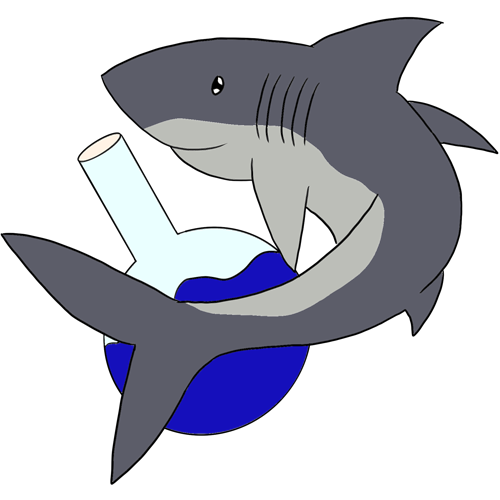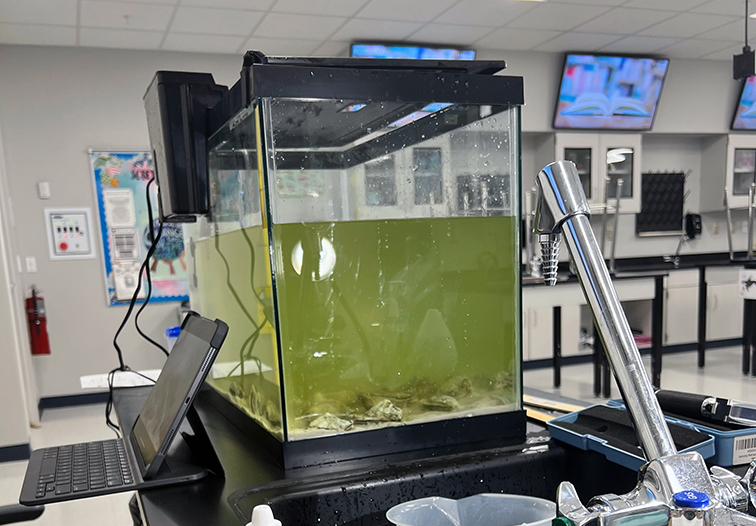As you may remember, I have a tank in my classroom that has animals from Sarasota Bay to showcase the diversity and importance of estuaries in my marine science class. I wanted to introduce my current residents of the tank to you all! So, without further ado…. Meet the Tank!

Variegated Sea Urchins
We have two variegated or “green” sea urchins, one about 3 inches in diameter and the other about 1 inch in diameter. As you can see in the pictures, sea urchins LOVE to wear hats of all kinds! From shells and rocks to pieces of trash they use these “hats” as a form of sunscreen to protect themselves from UV damage. In my classroom tank they will stick to anything from the shells scattered in the sand, to the artificial grass in the tank and in particular they love to wear the 3D printed hats that are placed in the tank. If you are dying to know the urchins’ names are Michael Scarn and Dwight Schrute.

Hake
We have one juvenile hake that runs the tank itself. Hakes are related to cod and haddock and can get up to 8 pounds and 3 feet long. Hake is available in most grocery stores as a classic white fish to grill or roast. Stanley, our resident hake is very food aggressive and loves to swim and cruise around the tank checking out the visitors. Stanley loves to follow fingers along the outside of the tank as well.

Filefish
We have a juvenile ornate filefish that wants to be best buddies with Stanley. Peeta Bread is very flat with a spine on the bottom of his body and a triggered horn on top. Filefish are sometimes confused for triggerfish due to this specialized horn. Filefish have a specialized green mottled coloration that allows them to blend into the seagrass they live in. Peeta Bread and Stanley I’m certain will soon be buddies.

Dwarf Seahorse
We have one dwarf seahorse that currently is unnamed as it is a newer resident of the tank. Dwarf seahorses are often mistaken for being baby seahorses, but they are indeed full grown and just instead only grow to a maximum of 2 inches. Seahorses are notoriously hard to care for with other animals and this seahorse must be fed separately a diet of small brine shrimp and copepods to sustain him. Fun fact! Dwarf seahorses are typically the color of the foliage they live on, and they can even change color to fit in with their surroundings.

Sea Hare
As you may remember, we also have a surprise resident of the tank, Carrots Jim the sea hare! Ole CJ was named for the “hare” the species is named after which refers to the bunny ear like projections on the animal’s head. Sea hares are a Gastropod with a soft internal shell and parapodia that project from the mantle to give it the ability to float in the water. This sea hare is a mottled sea hare that camouflages perfectly in with its estuary environment. CJ is a herbivore that helps to keep algae growth under control in the tank.
These resident friends make for a very entertaining and thrilling tank that is always changing and growing. Part of the balance of the tank is making sure to bring back organisms as they get too big or if they become too aggressive in the small space. The beauty of having a natural tank is that using my Collecting Permit I can make sure the animals come and go within a certain time frame and my students can see and experience a variety of animals in their own local habitat.

